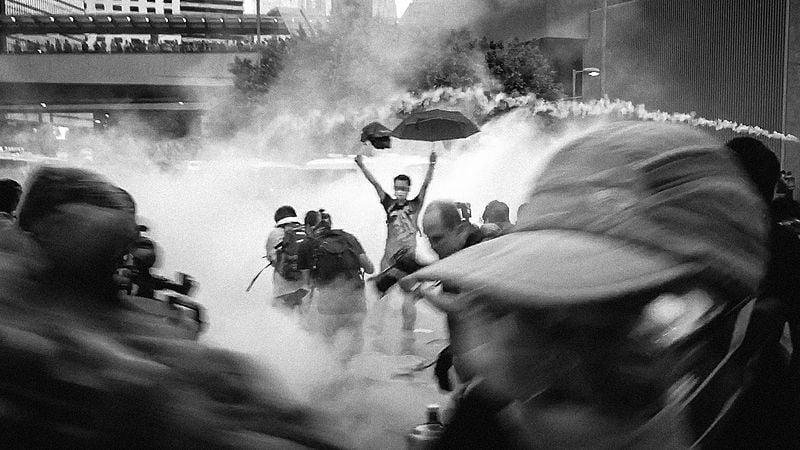After months of pro-democracy protests in central Hong Kong, Chinese authorities appear to be cracking down on protesters. Clashes broke out over the weekend as protesters surrounded the office of Chief Executive C.Y. Leung whom they have demanded resign since the announcement of election regulations that would make the 2017 popular election of Hong Kong leader little more than a rubber stamp on Beijing’s choice. The attempts to shut down the protester camps over the past month have not succeeded as protesters quickly regained most of the seized territory, but it suggests options are running out for Hong Kong’s Umbrella Revolution.
Although the pro-democracy group Occupy Central with Love and Peace (OCLP) started the initial campaign of civil disobedience earlier in the year, the protests occupying parts of central Hong Kong are the result of widespread student strikes that occurred in September following China’s announcement of new election protocols. Quickly dubbed an Umbrella Movement given the disparate groups participating and the use of umbrellas to block police teargas, the protests captured the attention of international and Chinese media as the largest since the failed 1989 Democracy Movement that ended with the Tiananmen Square massacre.
Much like the 1989 protests, what the Hong Kong protesters seek is greater freedom and autonomy to shape their own future. China has greatly liberalized the economy since 1989, which brought wealth to some, but the slow pace of reforms – particularly in the political sphere – still frustrates many. As a new generation rises, so do new demands on Beijing and the Chinese Communist Party.
The tepid response by Chinese authorities in the face of the protests gave hope that China learned its lesson from Tiananmen. But even if that is true, it does not provide a roadmap for agreement between Beijing and the protesters. Surprising many, the protests have not faded even as attention has moved elsewhere in the world and numbers shrank at several protest camps. For more than two months, the protesters and government have engaged in a type of standoff typically unheard of in China, but the question remains of how it will end.
China watchers received what may be foreshadowing of the answer this past week. Two high profile student leaders – Joshua Wong of the student activist group Scholarism and Lester Shum of the Hong Kong Federation of Students – were arrested along with more than 100 others last Tuesday and Wednesday as police used teargas, pepper spray and batons to clear the Mong Kok camp in central Hong Kong. The police succeeded in clearing the camp but protesters have returned each night since to occupy key sections of the encampment. Since then, clashes have continued as Mong Kok protesters accuse the police of excessive force and the government accuses the protesters of violating Hong Kong law and disrupting the economy.
Things escalated again on Sunday as thousands of protesters blocked Lung Wo Road, a major thoroughfare connecting East and West Hong Kong, and surrounded key government buildings which forced the Hong Kong legislature and government offices to temporarily close on Monday morning. Police responded by attacking one of the main protest camps, making territorial gains against the protesters through the use of pepper spray and batons to clear the area. The more the police try to shut down the camps through force, the more angry the protesters become, drawing new people into the action.
As this new phase of the protests unfold, it is becoming clear that there is plenty of room for things to escalate further; it is still unclear if OCLP and the Umbrella Movement will face the same fate as the 1989 Democracy protesters but there is a similar cycle playing out unless things change on the ground. Many observers have noted it is unlikely Beijing will allow the protests to continue into 2015, leaving a month for authorities to clear the numerous protest camps throughout Hong Kong. Yesterday, founders of OCLP called on the student protesters to retreat, an indication perhaps that even those who initially started this campaign know they are running out of peaceful options.
Now that the Beijing-hosted Asian Pacific Economic summit has passed, China has far less to lose in cracking down on protesters the way many expected them to back in September. Major crises going on in the world today also ensures that while a crackdown would receive attention, it is unlikely it would gain the same scrutiny China received in 1989. But whether Beijing does forcibly clear the protests or let them be, it is clear that the underlying goals of the protesters will remain, meaning what China has feared most – a long-term and organized democracy movement – may be exactly what they get no matter what they choose to do next.
